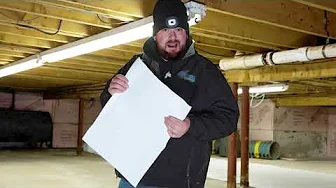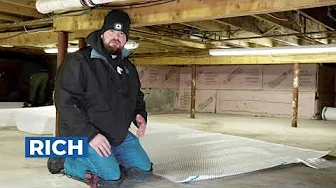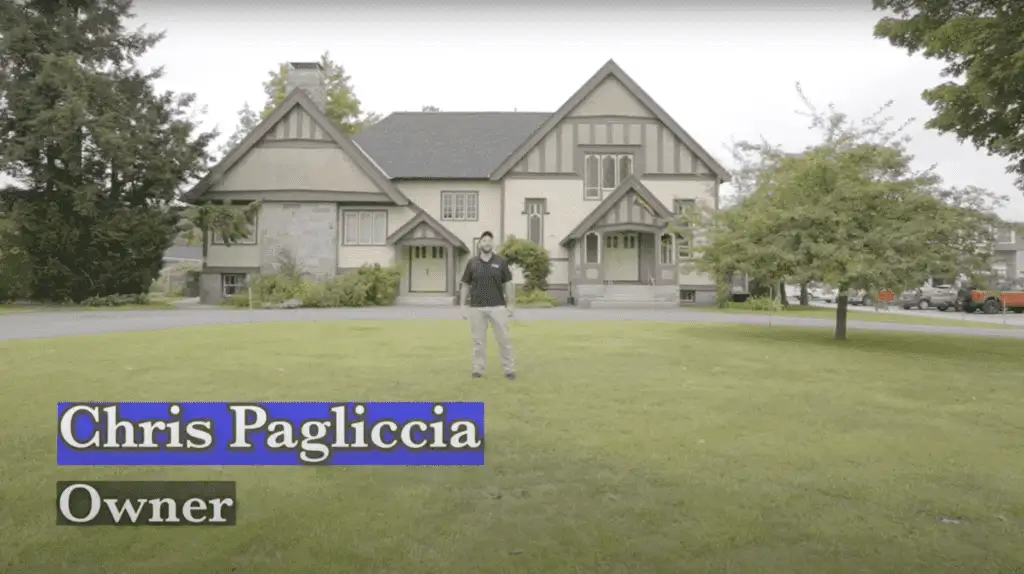Basement Finishing Concord MA
Basements are often underutilized spaces that hold untapped potential. With the right approach, they can become functional, enjoyable parts of your home. Finishing your basement can enhance your home’s comfort, increase its value, and provide much-needed extra space.
Real People - Real Great Results
Crawl Space Video Playlist
Why Consider Basement Finishing in Concord MA?
Concord basements don’t have to be relegated to storage bins and cobwebs. They’re hidden gems waiting to be mined for their true worth. Here’s why finishing your basement isn’t just a nice-to-have—it’s a game-changer.
First off, space. Concord homes have their character, their charm, and usually, their limitations. Extra room is always at a premium, and your basement is already part of your square footage. Why let it sit unused? Instead of ignoring the cold, cemented void under your living area, flip the narrative. That basement could be your escape room, your productivity zone, or just a plain old spot for the kids to burn off energy.
But here’s the kicker: finishing a basement doesn’t just add functionality to your life; it increases your home’s value. Buyers notice the ones with finished basements—and they’re willing to pay more. It’s the difference between “meh” and “wow” when your home competes on the market. Concord’s real estate scene leans toward history but demands modern livability. Tick both boxes with a bashed-out basement upgrade.
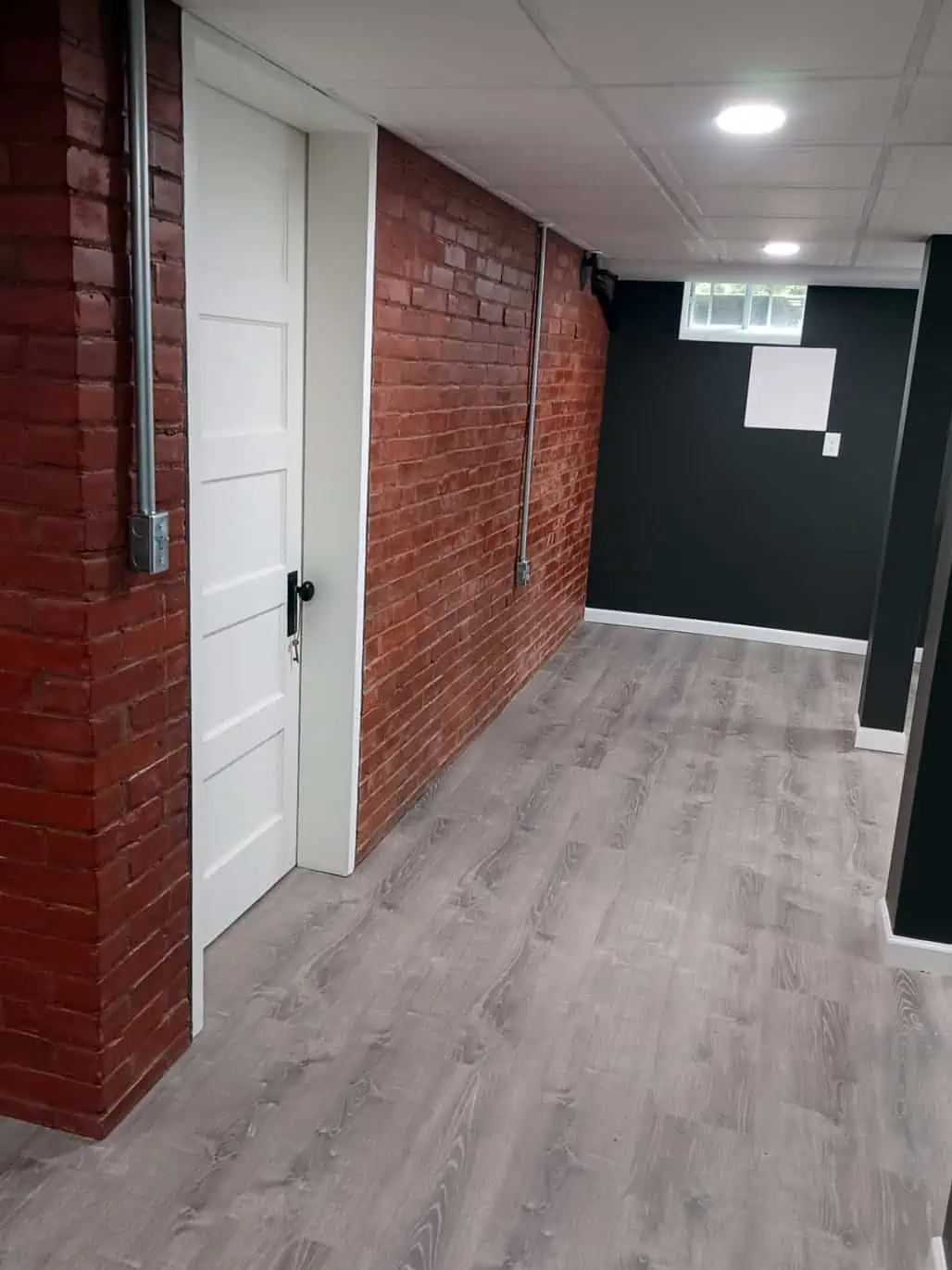
And then there’s comfort. Let’s face it, nobody wants to hang out in a damp, dark bunker. Finishing a basement means better insulation, smarter lighting, and floors that don’t feel like, well, a basement floor. You make the space yours, tailored to how you live. Suddenly, it’s not just extra space—it’s your most versatile, comfortable room in the house. Concord basements have a lot to offer once you stop seeing them as an afterthought. That untapped potential? It’s ready for you to capitalize on.
Initial Steps to Start Your Basement Finishing Project
Before you pick out paint swatches or dream of a cozy movie night down there, you’ve got some groundwork to do—literally. Starting right is the key to finishing strong. Here’s how to begin:
- Evaluate the Space: Take a long, honest look at what you’re working with. Got any damp walls? Cracks in the foundation? Low-hanging pipes or those all-too-familiar cobwebs dangling in the corners? Identify potential trouble spots early. A moisture test kit and a flashlight will be your best friends here. It’s not glamorous, but it’s necessary.
- Set a Budget: Fantasy basement ideas can rack up dollars quickly. Granite wet bars, full theaters, heated floors—fantastic, but all that costs real money. Get a clear idea of how much you’re ready (and able) to spend. A good rule of thumb is to pad your budget by 10-15% to cover any curveballs that come up mid-project. Spoiler: there will be curveballs.
- Define the Purpose: Ask yourself what’s missing in the rest of your house. Work-from-home chaos? Hello, office space. Outgrown living room? Time to build that epic family lounge. Got parents or friends who visit often? A guest suite could be in the cards. Knowing what you want the space to do will steer every decision you make going forward, from layout to lighting.
Starting smart—by assessing, budgeting, and planning—lets you avoid costly surprises and keeps the project moving in the right direction. Once these initial steps are locked in, the real magic can begin.
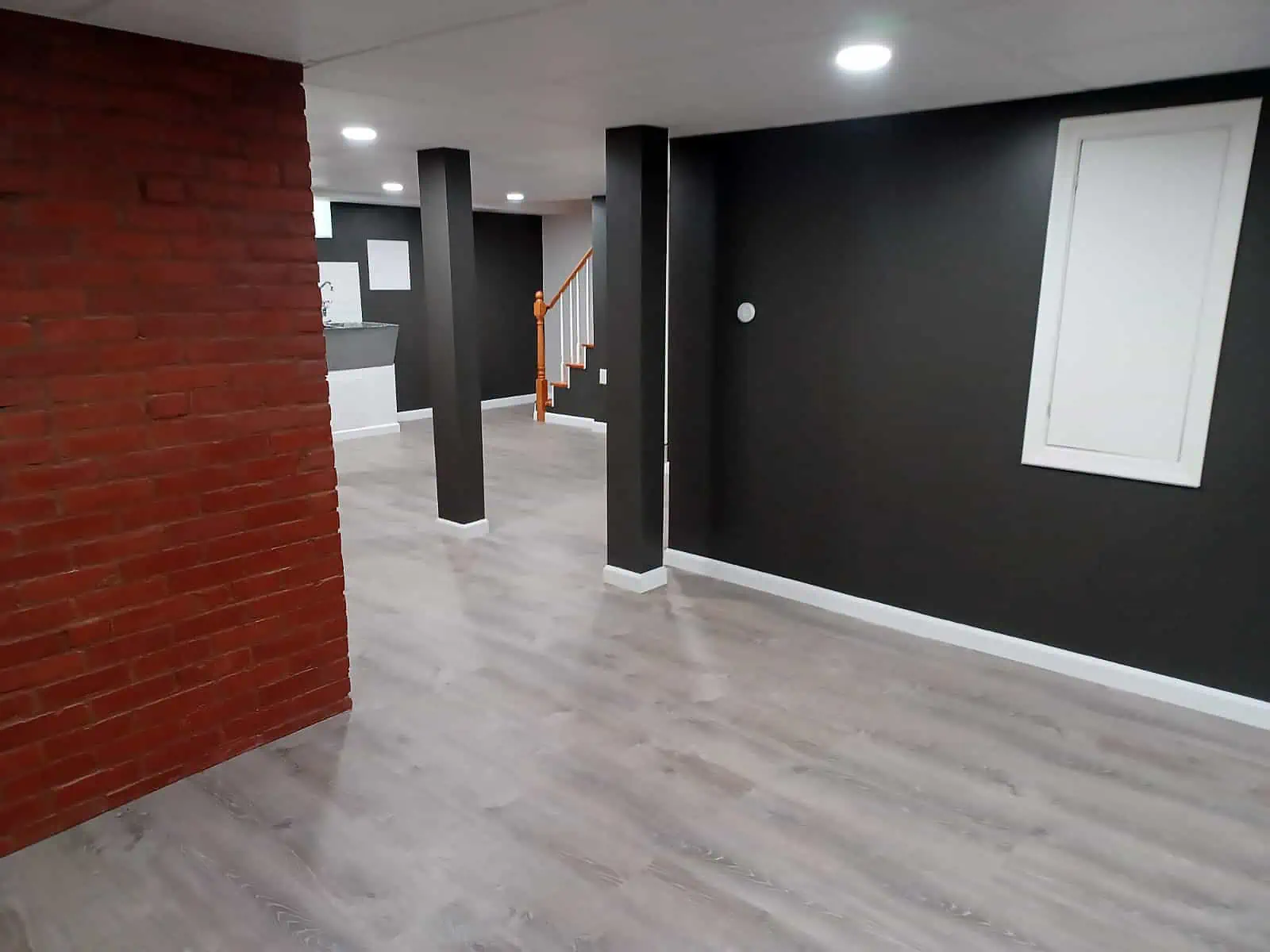
Addressing Structural and Environmental Concerns
Before anything else, the bones of your basement need to be solid. Trying to finish an unstable or damp space is like building a house on sand—it’s a problem waiting to happen. Start with moisture control. Basements are naturally prone to dampness, so installing vapor barriers, a proper drainage system, and a reliable sump pump is non-negotiable. If water issues are persistent, add waterproofing to the walls or floors before moving forward.
Next, think about insulation. It’s not just a comfort thing—it impacts energy efficiency and prevents condensation issues down the road. Use foam or fiberglass insulation designed for below-grade spaces to keep the temperature consistent year-round.
Ventilation often gets overlooked, but in the fight against musty air and mold, it’s your secret weapon. Whether it’s ductwork tied into your existing HVAC system or standalone vents, air circulation is critical for maintaining a healthy environment.
Finally, don’t skip checking on code compliance. Permits and inspections may sound like bureaucratic red tape, but they ensure your finished basement is safe and up to snuff. Think egress windows, ceiling height, and fire-rated materials. Working with local building authorities upfront saves you from headaches and surprise costs later.
Essential Features in a Finished Basement
A finished basement is only as good as the details you put into it. Beyond walls and paint, the features you choose will determine how functional, comfortable, and enjoyable the space becomes. Here are the essentials you shouldn’t overlook when planning your project:
- Lighting: Basements are notorious for being dark, but it doesn’t have to stay that way. Recessed lighting is a go-to option for its clean, unobtrusive design, while larger basement windows—if feasible—can flood the space with natural light. For added versatility, consider dimmable fixtures to set the mood, whether you’re hosting game night or binge-watching your favorite series.
- Flooring: The floor you choose can make or break the space, literally. Moisture-resistant materials like vinyl planks or tiles are absolute workhorses for basement environments. They’re durable, easy to clean, and look modern without trying too hard. Skip the wall-to-wall carpet unless you’re absolutely certain of your moisture control setup—nobody likes a soggy carpet situation.
- Soundproofing: Basements are often positioned directly below high-traffic areas of the home. That means noise from upstairs footsteps, loud conversations, or kids sprinting down the hall can easily interfere with the basement vibe. Adding acoustic insulation to the ceiling or installing soundproof panels can help keep the peace, whether you’re turning the space into a home theater or a quiet office.
- Storage Solutions: No matter how stylish your basement looks, clutter will ruin the aesthetic. Combat this by building in smart storage options, like floating shelves, hidden compartments, or wall-mounted cabinetry. Bonus: these aren’t just practical—they also maximize the feeling of open space, making your basement seem bigger than it actually is.
The common thread? Every choice should balance practicality with style. In a finished basement, doing it right the first time saves you from headaches (and do-overs) down the road.
Design Ideas for Your Concord MA Basement
When it comes to finishing a basement, the real fun lies in deciding how to use the space. With a little imagination (and practicality), your basement can transform into the most functional and personalized area of your home. Here are some no-frills ideas to get you started:
- Family Room: Keep it simple—throw down a comfortable area rug, set up a sectional, and hang a TV on the wall. Add in a couple of bookshelves or a small toy corner for the kids if needed. The goal here is usability, not excess.
- Home Office: Whether you’re running a business or just need a quiet spot to focus, a basement office offers an escape from the rest of the house. Go with minimal décor: a solid desk, a good chair that won’t kill your back, and plenty of lighting. Wall-mounted shelves can help keep clutter under control.
- Guest Suite: Have occasional visitors? A finished basement is perfect for hosting without losing your own space upstairs. A simple bed, bedside table, a small dresser, and—if your budget and square footage allow—a compact bathroom make for a complete, independent guest retreat.
- Home Theater: Basement acoustics lend themselves well to movie nights. Invest in basics like a large screen TV or projector, a simple surround sound system, and seating that prioritizes comfort over style. Keep the walls darker to enhance the cinematic feel, but don’t overcomplicate it—this doesn’t have to mimic an AMC.
- Workout Area: No overpriced gym memberships necessary. Lay down rubber flooring for traction, mount a mirror to check form, and set up a rack for weights or resistance bands. Toss in a yoga mat and some posters to keep the vibe motivating. You’re good to go.
Every one of these designs can be tailored to meet your exact needs without unnecessary fluff. Concord MA basements may differ in layout and size, but with the right vision, each one can become a space that pays its way in utility and comfort.
Hiring Professionals in Concord MA
When it comes to basement finishing, cutting corners isn’t the area to experiment. Hiring skilled professionals in Concord, MA, can save you from headaches down the road—both structurally and financially. Start by zeroing in on local contractors with a proven track record. These are the people who understand the quirks of Concord homes, from historical building nuances to common local issues like groundwater seepage.
Look for specialized services—contractors who focus on basement projects specifically, not just general home renovations. Basement finishing comes with unique challenges, like waterproofing below-grade spaces and dealing with limited ceiling heights, so you’ll want someone who’s been down (literally) this road before.
Reputation, frankly, is everything. Check online reviews, ask for references, and don’t shy away from grilling potential contractors about their credentials. A great contractor doesn’t just finish your basement—they troubleshoot potential problems before they arise. Think of it as hiring peace of mind in a hard hat.

DIY vs. Professional Basement Finishing
Deciding whether to tackle your basement finishing project yourself or hire professionals comes down to scope, skill, and risk tolerance. Let’s break it down.
DIY
If you’re handy and love a challenge, the DIY route might feel like the way to go—for select parts of the project, at least. Painting walls, installing shelves, or even laying basic flooring can be fulfilling and relatively low-risk tasks. Plus, you’ll save on labor costs, which can often account for a significant portion of the budget. That being said, DIY demands time, patience, and a certain level of know-how. A misstep with measurements or materials can lead to costly corrections down the line. If you’re entertaining this route, start small and only tackle what you’re genuinely confident handling.
Professional Help
For the big stuff? Call in the pros. Structural modifications, electrical wiring, plumbing installations, and extensive waterproofing require expertise—and failure to get it right the first time can not only rack up expenses but also present safety hazards. Basement finishing often involves unique challenges like low ceilings, moisture resistance, and proper insulation for below-grade spaces. These are no place for guesswork. A contractor comes equipped with experience, tools, and a knack for solving issues before they become headaches.
Finding Your Balance
The sweet spot may lie somewhere in between. Consider a hybrid approach: handle aesthetic touches yourself while leaving the technical work to someone qualified. You’ll still get the satisfaction of a personal touch without biting off more than you can chew. Whatever your choice, weigh costs against risks carefully—cutting corners isn’t worth compromising the longevity or safety of your finished basement.
Maintenance Tips for Finished Basements
A finished basement isn’t a “set-it-and-forget-it” part of your home—it requires some ongoing care to stay in great condition. Here are a few no-nonsense maintenance practices to keep it functional, comfortable, and damage-free. First, keep a close eye on moisture. Even with top-notch waterproofing during the renovation phase, basements are more vulnerable to dampness than the rest of your home. Check for any discoloration on walls, a musty smell, or condensation on surfaces—these could be early signs of trouble. Address issues immediately before they turn into expensive headaches. A dehumidifier is also a good long-term ally in managing humidity.
Next, make HVAC maintenance a priority. A finished basement works best when the air feels fresh and the temperature is consistent. Ensure your heating and cooling systems are running efficiently and check that vents or ductwork in the basement are unobstructed. If you’ve added any independent climate control equipment, like a mini-split system, service it regularly.
Lastly, don’t forget about cleanliness. Basements naturally collect dust and, depending on your flooring materials, potential allergens like pet dander or mildew. Regular vacuuming, mopping, or wiping down surfaces will keep the space inviting. For furniture and storage solutions, an occasional deep clean helps everything stay odor-free and fresh. With these simple habits, you can protect your investment and keep your finished basement a source of comfort, not concern.
Benefits of a Well-Finished Basement
A finished basement pulls double duty. First, it gives your home more usable space—turning once-neglected square footage into a functional oasis. Second, it boosts versatility, offering a blank canvas that can adapt to your lifestyle, whether you’re hosting guests, sweating through a home workout, or binging your favorite shows in a cozy family room. But it’s not just about practical benefits. A finished basement cultivates a deeper sense of ownership and pride in your home. It takes what was probably the least polished part of your property and transforms it into a space that matches the rest of your living areas in quality and care. Plus, knowing you’ve maximized your home’s potential? That’s the cherry on top.
Conclusion
Finishing a basement in Concord MA opens doors to untapped potential beneath your feet. It’s not just about gaining extra square footage—it’s about reclaiming space that can elevate your home’s function and versatility. Whether you envision a cozy family retreat, a practical home office, or a space tailored to your lifestyle, the possibilities are endless when approached the right way.
By addressing key structural concerns, selecting durable finishes, and incorporating smart design features, you can transform this often-overlooked area into a cohesive extension of your home. And while DIY enthusiasts may handle parts of the process, major components like waterproofing and code compliance should never be left to chance—professional expertise makes all the difference.
Ultimately, a well-finished basement isn’t just about improving the aesthetics or increasing your property value (though those are major perks). It’s about creating a space that works for you, brings joy to everyday living, and feels like it’s always been a natural part of your home. The basement may have started as a blank canvas, but with a little vision and effort, it can become one of the most valuable and cherished parts of your house.
Reviews from Happy Customers
Our top priority is customer satisfaction, and we work closely with clients to understand their unique needs and goals.




